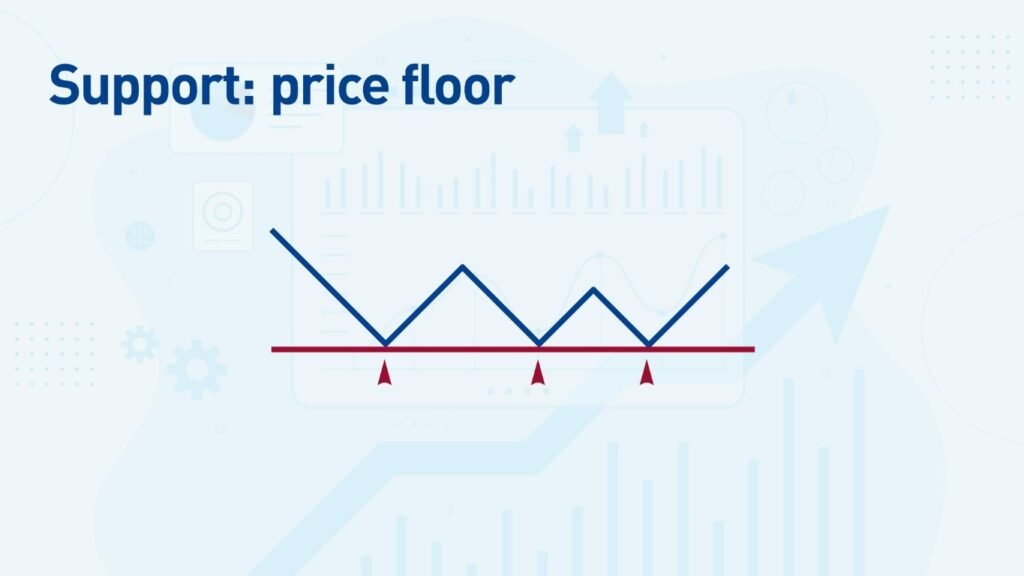Support and resistance levels are key concepts in technical analysis used to identify potential turning points in the price movements of financial instruments. Traders analyze historical price data to identify these levels, which can help them make informed trading decisions. Here’s an explanation of support and resistance levels in trading:
Support Level:

- Support is a price level at which the demand for a financial instrument is strong enough to prevent its further decline.
- When the price of an asset approaches a support level, buyers are more likely to enter the market, as they see the asset as attractively priced.
- As buying pressure increases at the support level, it helps to counteract the selling pressure, causing the price to bounce off the support level and potentially reverse its downward movement.
Resistance Level:

- Resistance is a price level at which the supply of a financial instrument is strong enough to prevent its further rise.
- When the price of an asset approaches a resistance level, sellers are more likely to enter the market, as they see the asset as overvalued or an opportunity to take profits.
- The selling pressure at the resistance level can halt the upward movement of the price, causing it to reverse or consolidate around that level.
Role Reversal:

- Once a support level is breached, it may become a resistance level in the future. Similarly, once a resistance level is broken, it may turn into a support level.
- This phenomenon is known as “role reversal” and occurs because traders tend to remember previous key levels and react to them when they are revisited.
Support and resistance levels are not precise prices but rather zones where buying and selling pressure is expected to be significant. Traders use these levels to identify potential entry and exit points for their trades. For example, a trader may buy near a support level, expecting the price to bounce higher. Conversely, a trader may sell or take profits near a resistance level, expecting the price to reverse or consolidate.
It’s important to combine support and resistance analysis with other technical indicators and tools to increase the probability of successful trading decisions. Traders should also consider fundamental factors and market sentiment when using support and resistance levels to guide their trading strategies.